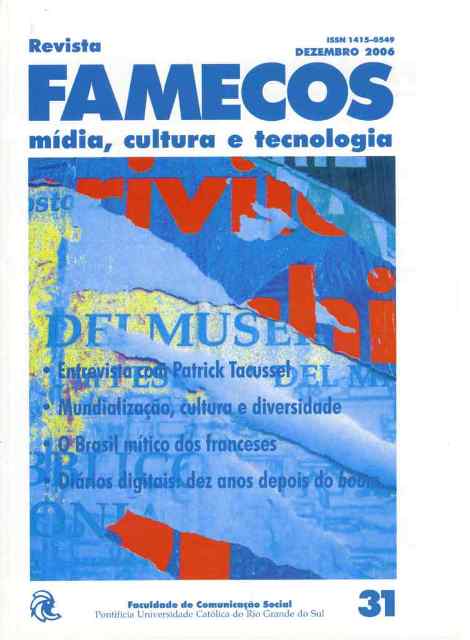Signification, innovation and stereotypes
DOI:
https://doi.org/10.15448/1980-3729.2006.31.3394Keywords:
Communication, stereotype, meaningAbstract
This paper examines the role of stereotypes in meaning, especially in terms of Peirce's semiotics and its consequences for design practice. He enfeebles the hidden presence of common sense assumptions in inference, the logical process Peirce saw as the fallible, tentative, and rhetorical way through which subjects make sense. However, it is expected that the destabilizing relativistic effect of semiosis may also be capable of producing desired changes in ideas received when negativity (or rejection) is activated by the material practices of design (advertising, architecture, photography, etc.) whenever one wants Create innovative, concrete propositions with the objective of altering specific spectra of existing prepositions.Downloads
References
ADAMS, James L. Conceptual Blockbursting: A Guide to Better Ideas, 2. ed. New York: W W Norton & Co, 1980.
COPI, I. M. Introduction to Logic, seventh edition, New York: Macmillan, 1986.
CORBETT, E. P. J. Classical Rhetoric for the Modern Student, Oxford: Oxford University Press, 1965.
COWARD, Rosalind, and ELLIS, John. Language and Materialism: Developments in Semiology and the Theory of the Subject. London: Routledge & Kegan Paul, 1977.
FREUD, Sigmund. The Essentials of Psychoanalysis, selected, introduced and commented by Anna Freud, translated from the German by James Strachey, London: Penguin Books, 1986.
HALL, Stuart. "The rediscovery of 'ideology': return of the repressed in media studies". In: GUAREVITCH, Michael; BENNET, Tony; CURRAN, James; WOOLLACOTT, Janet (Ed.). Culture, society and the media. London: Methuen, 1982.
HOLENSTEIN, E. Roman Jakobson's Approach to Language - Phenomenological Structuralism. Bloomington: Indiana University, 1974/1976.
KRISTEVA, Julia. Revolution in Poetic Language. New York: Columbia University, !974/1984.
O'SULLIVAN, Tim; HARTLEY, John; SAUNDERS, Danny; FISKE, John. Key Concepts. In: FISKE, John (Ed.) Studies in Communication. London: Methuen, 1983.
PEIRCE, Charles Sanders. Philosophical Writings of Peirce, selected and edited with an introduction by Justus Buchler. New York: Dover
THIEL, Philip. Visual Awareness and Design: An Introductory Program in Conceptual Awareness, Perceptual Sensitivity, and Basic Design Skills. Seattle: University of Washington Press, 1981.
WEEDON, Chris. Feminist Practice and Poststructuralist Theory. Oxford: Basil Blackwell, 1987.
WILDEN, Anthony System and Structure: Essays in Communication and Exchange, 2. ed. Social Sciences Paperback. London: Tavistock Publications Ltd, 1980.
______. The Rules are no Game: The Strategy of Communication. London: Routledge & Kegan Paul, 1987.
Downloads
Published
How to Cite
Issue
Section
License
Copyright
The submission of originals to Revista Famecos implies the transfer by the authors of the right for publication. Authors retain copyright and grant the journal right of first publication. If the authors wish to include the same data into another publication, they must cite Revista Famecos as the site of original publication.
Creative Commons License
Except where otherwise specified, material published in this journal is licensed under a Creative Commons Attribution 4.0 International license, which allows unrestricted use, distribution and reproduction in any medium, provided the original publication is correctly cited.






